Choosing a Good Massage Therapy or Esthetics School
Everything You Need to Know
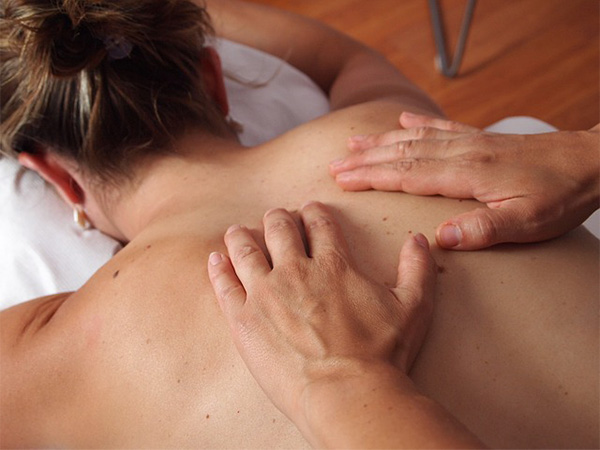
Choosing the right school is a significant step toward building a successful career in either massage therapy or esthetics. The Academy of Natural Therapy provides a comprehensive guide to help you find a program that fits your professional aspirations, lifestyle, and financial considerations.
You will want to give yourself time to research and review various massage therapy schools, read up on the curriculum and credentials of the faculty, familiarize yourself with the school calendar and time requirements of the massage program, check out tuition costs and financial aid opportunities, and as always, don’t be afraid to ask a lot of questions! This is your future. Don’t let an admissions officer make you feel bad for wanting to make an informed decision.
Chapter 1:
Careers/Outlook
The job outlook for massage therapists and estheticians is strong, with opportunities in diverse settings. Researching industry trends and growth projections can help you choose a specialization aligned with your career goals.
There is no shortage of jobs for massage therapists. As more health care practitioners view massage as an important part of overall patient wellness, the demand for skilled massage therapists continues to grow. According to the Bureau of Labor Statistics, employment of massage therapists is projected to grow 24 percent by 2026, much faster than the average for all other occupations. Continued growth in the demand for massage services will lead to new openings for massage therapists.
A career as a massage therapist also offers flexibility. This includes your schedule, as well as location. Massage therapists can be found working in a wide variety of locations including:
- Massage facilities
- In-home offices
- Physicians’ offices
- Hospitals, clinics, and wellness centers
- Health clubs and fitness centers
- Salons and spas
- Hotels, resorts and cruise ships
Chapter 2:
Prerequisites
Most massage therapist schools require you to be at least 16 years of age, and have a high school diploma or a General Educational Development diploma (GED.)
While not required, there are also some characteristics of massage therapists that are beneficial for students to have. Your attitude should be one of healing and promoting health for your clients. Massage therapists need a good grasp of verbal communication to learn a client’s medical history and the results they hope to get from treatment. They need an ability to develop rapport with clients in order to secure repeat business. Finally, they need a capacity to manage the flow of their work day and the spacing between sessions in order to avoid repetitive motion injuries, fatigue, or career burnout.
Chapter 3:
Specialization/Classes
Massage therapy education is offered by public and private post-secondary institutes. This means the programs and curriculum will vary. However, a typical 750-Hour Massage Therapy Program is the starting point for most students looking to train as a professional Massage Therapist. Programs offer practical training in different massage techniques, along with coursework.
In both fields, specialization can make a significant impact on your career. You may want to explore specialized training in sports massage, deep tissue, or esthetics services like skincare and makeup artistry.
The coursework may include:

Kinesiology
This course looks at the specifics of the musculoskeletal system with the students gaining an understanding of various muscles, including origins, insertions, agonist, and antagonist muscles. They will also study ligaments and joints and how they all relate to each other in movement.

Anatomy and Physiology
This course focuses on the anatomy and physiology of the musculoskeletal system (bones, bony landmarks, joints, muscles), levels of organization, and mechanisms of health and disease.

Pathology
This course is designed to help identify pathological conditions in a therapeutic setting. This course enables students to identify these conditions and determine if they are contraindicated in bodywork. Students will also cover prescription medicines and possible adverse reactions to massage.
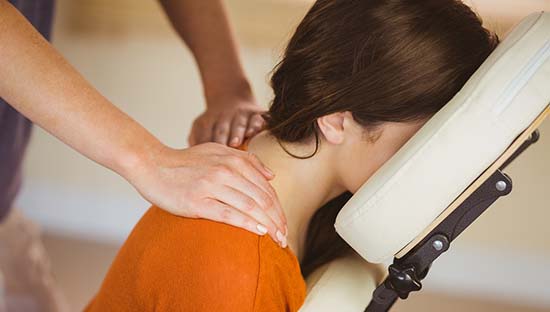
Chair Massage
This course teaches the student how to do a chair massage routine that includes the back, arms, hands, posterior neck, and scalp. The student will learn to think through the process of how to adapt other methods of massage and supportive work to the chair position.
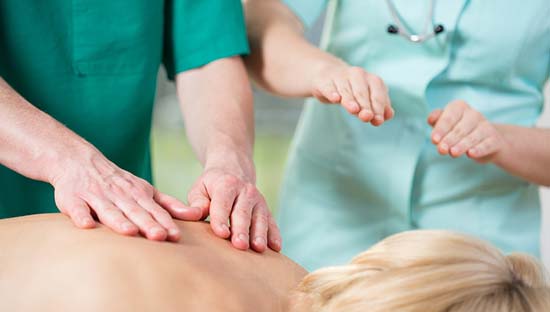
Clinical Hours
It’s vital for any massage student to get hands-on learning in a massage program. You’ll work on fellow classmates in the beginning, gradually transitioning to real clients as you progress through the Academy.

Entrepreneurship
This course focuses on the basics for sole entrepreneurship. Students learn insurance billing, business plans, success strategies, advertising, marketing, billing, fees, locations, bookkeeping, tax information, basic business licensing, and sales tax.

Swedish Massage
This class introduces students to the basics of Swedish Massage. Students will study and practice specific movements, becoming comfortable with each, before putting them together in a full-body massage. The effects and indications for each massage stroke will also be covered in this class.
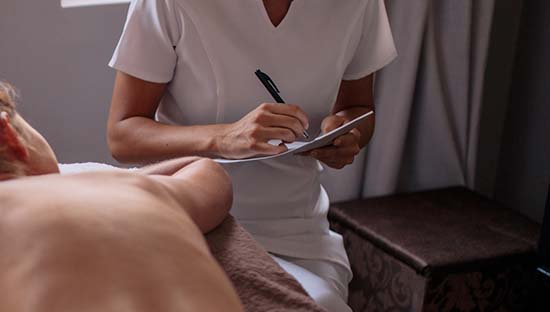
Communication
This course focuses on learning and applying interpersonal communication skills such as active listening and conflict resolution. Students receive an introduction to the basic concepts in therapeutic dialogue. Ethics, empathy, and compassionate regard for the client will also be included.
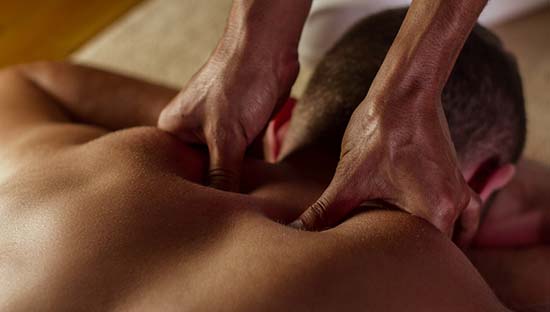
Trigger Point Therapy
Trigger points are a major cause of chronic muscular pain. This course helps the student identify when a trigger point is responsible for the pain, as well as how to successfully release one in connective tissue. Deep-release methods and supportive work are the focus of this introductory course to deep-tissue massage.
The best schools start with the basics, like Anatomy and Massage Concepts first. Curriculum traditionally builds from there. Some programs also give students the opportunity to specialize in a certain area of the field, such as sports massage or medical massage.
Want More Information?
Get a complete Academy of Natural Therapy Enrollment Package delivered directly to your door!
Chapter 4:
Modalities Taught
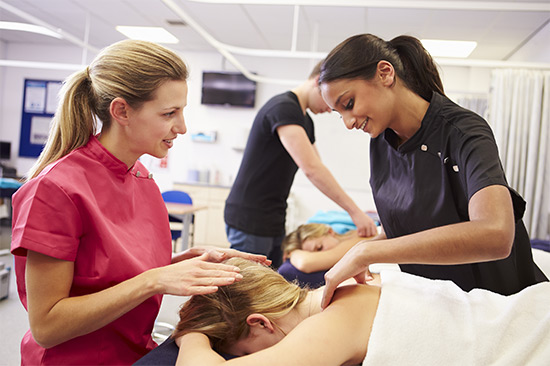 Consider looking for a school that specializes in training massage therapists. This will indicate expertise in the field compared to schools that offer a multitude of various programs. Reputable massage schools may also offer education in fields of study complementary to massage or other spa-related programs, such as skin care.
Consider looking for a school that specializes in training massage therapists. This will indicate expertise in the field compared to schools that offer a multitude of various programs. Reputable massage schools may also offer education in fields of study complementary to massage or other spa-related programs, such as skin care.
A quality massage program will also teach multiple types of massage, or modalities. The more types offered, the better. This will lead to you becoming a well-rounded massage therapist. You will be able to offer your clients more, and have greater opportunity for a successful career.
There are over 80 different types of massages you can learn about at massage schools. There are few massage schools that teach and train you in all of these modalities. The leading massage schools are the ones that focus on a select few modalities and ensure that they provide the necessary education and training to their students so that they can master them.
Common massage modalities include:
Swedish Massage
Swedish massage has become the traditional form of massage therapy found in most salons around the country.
Chair Massage
With this type of massage students learn how to give a 15 minute on-site massage in a massage chair utilizing their basic Swedish Massage techniques and pressure point work.
Prenatal Massage
This massage is specific for mothers-to-be. The benefits, indications, contraindications and specific considerations for each trimester of pregnancy must be learned by a massage therapist.
Hydrotherapy
Hydrotherapy encompasses the use of water for healing purposes. The use of water as a clinical tool is demonstrated, along with various mud and herbal body wraps. This class is designed to provide the student with a complete review of the science, practice, and techniques of hydrotherapy in relation to the anatomical and physiological systems of the body.
Deep Tissue
Deep tissue massage is used for more significant problems, such as chronically tight muscles, strains, and injury. This modality of massage is not just a deeper version of a Swedish massage; instead, it utilizes its own special techniques and strokes to generate the client’s goals from the session. The therapist targets the deeper levels of the muscles and the connective tissue to promote healing.
Hot Stone
As its name suggests, hot stone massage incorporates the use of hot stones as a way to warm and loosen the tight muscles to facilitate the massage. The stones may also be used during the massage to apply pressure to the tight areas of the body.
Special Needs
The purpose of this course is to address a non-typical client who could benefit from Massage Therapy. Different massage techniques, transferring techniques, intake, contraindications to help those extraordinary people such as disabled children, elderly, handicapped and injured.
Sports Massage
This modality consists of techniques designed to reduce injury, alleviate inflammation and reduce the soreness caused by training and competition. Pre-event and post-event massage must be learned and practiced by therapists, as well as anti-cramping techniques, proper triage, indications and contraindications for sports massage.
Medical Massage
Medical Massage is therapeutic bodywork delivered in a medical setting, under the direction of a doctor or other health care providers. Medical Massage has advanced training in massage techniques, pathology and contraindications. Medical Massage is rapidly becoming more recognized and desired by health care professionals.
Shiatsu
Shiatsu is a form of acupressure massage whose name is literally finger pressure in Japanese. It is a traditional form of massage in Japan that employs rhythmic pressure at specific meridian points in the body for a few seconds to unblock the body’s energy.
Reflexology
Reflexology is another massage based on acupressure concepts, but it focuses solely on the hands and feet. Its basis is the belief that the life’s energy and meridians correspond to points on the hands and feet, so by massaging these areas, you can increase the flow around the body and reduce complaints.
Chapter 5:
Scheduling
Evaluate the scheduling options available, including full-time, part-time, and weekend classes, to find a program that fits your needs.
Most massage schools will offer various times throughout the calendar year to begin classes. You will need to be aware of time requirements for a particular program. Make sure your other obligations will allow enough time to study and practice outside of class. Colorado requires a minimum of 750 class hours to become a massage therapist. Many massage schools offer flexible class schedules to fit various lifestyles, including day and nighttime class options. With so many different possible schedules, most students are able to find one that works well for their lifestyle and commitments.
Full-time students should expect to spend approximately 20 hours per week in class. This does not include outside study time, clinic internship hours, other school-related activities, or outside practice time.
Chapter 6:
Types of Schools
Different schools offer varied learning environments, including on-site clinics, hands-on labs, and classroom-based instruction. Choose a school that aligns with your preferred learning style.
There are currently more than 300 accredited massage therapy institutions in the United States. The type of school you choose will likely have an impact on the setting in which you practice.

Spa Training Schools
Some massage therapists get their training and certifications from organizations that teach a variety of spa treatments. These schools will offer training in massage therapy, as well as skin care and cosmetology. There may even be an option to train in other spa treatments as you work toward your massage certification.

Massage-Only Schools
Some schools focus exclusively on massage therapy. These programs may offer specific opportunities for students. Some may focus on training to work in medical offices, at resorts, or in sports therapy.

Specialty Schools
Certain schools offer programs in holistic healing, alternative medicine, traditional medicine, and modern biomedical science. At these schools, you can share ideas with future doctors, naturopaths, chiropractors, and Chinese medicine practitioners while studying massage therapy.

College/University Medical Schools
Massage therapy students at traditional college and university medical programs benefit from the rigorous standards and sterling reputation of a world-class medical school. In addition to massage therapy instruction, these types of institutions may offer accelerated tracks for physical therapists and other health care professionals who want to add massage therapy certification to their existing credentials.
Start Your Journey Today!
Come visit ANT’s 36,000 sq. ft. of lecture, practice and classroom space. Visitors receive a free 1 hour massage gift certificate for scheduling.
Chapter 7:
Cost
Massage therapy training typically costs anywhere from $20 to $40 an hour, with the average being $25 or $30. This comes out to a tuition range of $15,000 to $30,000 for your 750-hour certificate, depending upon location.
The above estimate is for tuition only. There may be additional costs for books and supplies. While some programs include the cost of a massage table in their tuition prices, not all do, so you may need to spend between $100 (used) to $500 for a table, depending on the kind you buy.
Tuition and financial aid options can vary widely between programs. Research grants, scholarships, and financial aid to support your massage therapy or esthetics education.
The good news is scholarships are available for massage therapy programs, some of which are even given specifically to students studying massage. These include:
The American Massage Therapy Association (AMTA) offers an annual scholarship to those pursuing a career in massage therapy. Applicants must be enrolled in, or admitted, in a 500-hour minimum entry-level massage therapy program at the time the scholarship application is submitted.
Massage Without Borders has been set up to provide information and resources to help colleagues in times of natural disasters. They currently have their Adopt-A-Student scholarship available to students who are currently enrolled in a massage program.
The International Spa Foundation provides students of massage therapy a variety of scholarships throughout the year.
The Massage Therapy Foundation awards research grants to those conducting studies that seek to advance understanding of specific therapeutic applications of massage, public perceptions of and attitudes to- ward massage therapy, and the role of massage therapy in health care delivery.
Some massage therapy schools even offer their own financial resources for students. These may include:
- Federal Financial Aid (for those who qualify) – You can ask the massage school for an application or apply free online at fafsa.gov
- Scholarships – After a student has applied to a school, they may also fill out a scholarship application. Scholarships are awarded after acceptance to the school and after a review of the application and student transcripts.
- Veterans’ Education Assistance – Some schools may be approved for education and training by a state of federal agency as an education program for military veterans. This may include greatly reduce or free tuition.
Chapter 8:
Eight Great Questions to Ask
Be proactive in gathering information about program outcomes, faculty credentials, class sizes, and career support services. These insights will help you make an informed decision.
Choosing which school to attend is a big decision no matter what you want to learn, but there are certain questions every potential massage therapy student should be asking. Not all massage educations are equal. Here are some questions that every student should ask and every massage school should have a good answer for:
How long has the school existed?
If a school has been around for many years, it’s a good sign that they deliver good results and that they’ll be there for you as you make the transition from student to professional. The longer a massage school has been in business, the more likely it is that they offer a quality education and that their reputation is in good standing.
Is Your School Accredited?
Whether or not a massage school is accredited is important to consider when choosing a school to attend. Being accredited means that an objective third party has examined and assessed the school and determined that it meets the high standards set by the United States Department of Education. Everything from curriculum to record keeping to a school’s financial health and facilities are looked at by the accrediting agency during an onsite visit.
How long will it take to complete the program? What days and times are classes offered?
Your goal here is to determine whether the school is flexible enough so you can make it fit into your life schedule. Also find out what happens if you miss a class and if there are any make up options.
What type of Massage techniques does this school focus on?
An outstanding massage school teaches multiple types of massage therapy. Though Swedish massage therapy is a standard and is used extensively, there are many other important types of massage therapy, and knowing which type is applicable for a client’s needs and how to use them correctly is one key to having a successful massage career.
What is the school culture like? What are the main beliefs and philosophies?
This question is meant to reveal whether the school’s philosophies and beliefs match yours. If they don’t, you may want to consider another school.
Is hands-on training part of the curriculum?
With massage therapy, it’s absolutely essential that you participate in literal hands-on training. Some classroom learning is required, and you will be tested on your knowledge, but an exceptional massage therapy school makes sure that students are able to practice what they learn so they can develop skills, be corrected if necessary, and develop proficiency they need for a successful career.
Will the school help me with job placement?
Good massage schools invest not only in their students, but their graduates too. Find out if the school you are considering assists with the job placement to help you as you embark on their careers. Also ask for the statistics on the number of graduates who have successfully gained employment in the massage therapy field.
How does the massage school help to prepare you for state licensing certification exam?
This could be the most important question you ask. You must pass licensing exams in order to practice as a massage therapist. Ask them to show you some success rates for graduates at the national board exams. This will reveal how well the school prepares its students to pass the certification exams.
Chapter 9:
Accreditation
Accreditation is essential for ensuring that your education meets industry standards. Check that a recognized accrediting agency accredits the program.
Accreditation is one of many factors to consider when choosing a massage training program. The goal of accreditation is to ensure that education provided by institutions of higher education meets acceptable levels of quality. You do not want to go to a massage school that is not accredited. This could affect your future employment.
Several federally approved agencies evaluate and accredit massage schools including:
You will also want to attend a school that requires students complete all of the educational requirements of the state licensing board. Most states require a minimum number of hours of training, passing an exam to demonstrate competency (for instance, passing the MBLEx), and continuing education to practice. The Federation of State Massage Therapy Boards administers the MBLEx.
Become a Licensed Massage Therapist
Apply to the Academy of Natural Therapy and start your transformation into a professional Licensed Massage Therapist.
Chapter 10:
Finding the Right School For You
Beyond academics, consider factors like campus culture, student resources, and available career support to find a school where you can thrive.
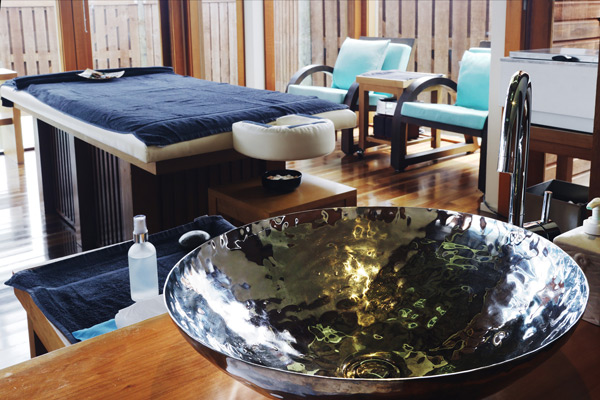 A massage therapy school is only as good as its reputation. Reputable schools will get good recommendations from students, graduates, and professionals already working in the field. Don’t be afraid to ask around about specific schools. You can also ask potential employers if there is a particular school they prefer or recommend. Additionally, the longer a massage school has been in business, the more likely it is that it offers a quality massage therapy education.
A massage therapy school is only as good as its reputation. Reputable schools will get good recommendations from students, graduates, and professionals already working in the field. Don’t be afraid to ask around about specific schools. You can also ask potential employers if there is a particular school they prefer or recommend. Additionally, the longer a massage school has been in business, the more likely it is that it offers a quality massage therapy education.
Be sure to pay a visit to each school you are interested in and ask plenty of questions. Ask about the standard curriculum and the different classes you will take throughout the course of your program. Also find out how many teachers at the school have or have had a full time massage practice, how many of graduates have found jobs or started their own business, and how many of your graduates are still working as a massage therapist after a couple of years.
Don’t be afraid to discuss any concerns or questions you have. You will be spending a lot of money on your education and you want to be sure to protect that investment in yourself. You are a reflection of your school. Entering a good massage school is important because that is where you will build your foundation and establish your knowledge and skills about massage.
Chapter 11:
What is the MBLEx?
The MBLEx is the standard licensing exam for massage therapists. For esthetics, most states require specific board exams. Verify that the licensure requirements are in your desired practice state.
 The right education and training will give you the adequate preparation to not only practice, but successfully complete licensing exams. Passing the MBLEx is required in almost all U.S. states as part of obtaining a license to practice massage therapy. Some states may require additional or alternate exams, but most have adopted the MBLEx as their standard licensing exam.
The right education and training will give you the adequate preparation to not only practice, but successfully complete licensing exams. Passing the MBLEx is required in almost all U.S. states as part of obtaining a license to practice massage therapy. Some states may require additional or alternate exams, but most have adopted the MBLEx as their standard licensing exam.
The MBLEx (Massage & Bodywork Licensing Examination) is governed by the Federation of State Massage Therapy Boards FSMTB. It is designed to provide a standard examination for students of Massage for entry-level professional scope of practice in gaining licensure.
The MBLEx is a two-hour-long, computer-based test consisting of 100 multiple-choice questions. The examination includes questions on:
- Client Assessment, Reassessment & Treatment Planning
- Ethics, Boundaries, Laws, Regulations
- Pathology, Contraindications, Areas of Caution
- Guidelines for Professional Practice
- Anatomy & Physiology
- Kinesiology
- Overview of Massage & Bodywork
- Benefits & Physiological Effects of Soft Tissue Manipulation Techniques
Chapter 12:
Do I Need a License?
Most states regulate the massage therapy profession. All legally practicing massage therapists are either licensed or certified, or in some states, both. In those states, a certified therapist is the highest stature of practitioner. The opposite can be true for States that do not have a certified status and only have a licensed (LMT) status. This applies whether you are working as a freelance massage therapist, or if you wish to be employed by an establishment offering massage therapy services. Your clients will require a licensed massage therapist even if you are working on freelance basis, even more so if you will join a clinic, hospital, day spa, beauty salon, hotel, or any other establishment where you are seeking employment.
A massage therapy license assures clients of their safety while inside your business premises. It’s a big risk for clients to go to massage parlors or day spas that do not have a license to operate. More than the sanitation concerns, it is the personal safety that is being put at risk when you walk into an unlicensed establishment offering massage services.
A massage therapy license also enhances your reputation as a therapist and legal massage therapy business. More importantly, a license serves as a safeguard against any unsavory reputation that your business might earn in the industry.
Chapter 13:
Professional Development

Both massage and esthetics careers offer paths for continued learning and specialization. Look for programs that offer certifications or advanced courses.
It is not enough for a massage school to just teach student how to give a massage. Professional development is an important part of a future massage therapist’s education. Courses offered in professional development, including operations and clinical management, and marketing contribute to those with a desire to open their own busniess or manage their current practice. Personal growth should be considered a natural component of a massage therapy program as students learn more about themselves, and come to understand the importance of self-reflection in the process of becoming a massage therapist.
In a curriculum designed for professional development, students explore movement therapies, boundaries, new teaching methods, and can learn new forms of massage techniques such as orthopedic massage or canine massage. Students can also develop and expand their interpersonal communication skills and explore issues about boundaries and safety. In addition, they also learn how to work and promote themselves successfully in a variety of areas including private practice, spas, and other types of massage venues.
Professional development offers benefits for your clients, as well as yourself.
Benefits for Patients:
- Improvement in the quality of care provided to patients
- Reassurance that the therapist is up to date with new techniques
- Improved patient confidence in the therapist’s abilities
Benefits for You:
- An opportunity to improve your medical knowledge and career
- Improved relationships with professional groups and other massage therapists
- Greater awareness of developments in the field of massage therapy
Chapter 14:
The Academy of Natural Therapy Difference
At the Academy of Natural Therapy, we focus on comprehensive, hands-on training in massage therapy and esthetics to make sure our graduates are well-prepared for rewarding careers. Our experienced faculty, personalized approach, and strong industry connections set us apart.
Since our establishment in 1989, The Academy of Natural Therapy has given special attention by all means possible to produce the best massage therapists. The knowledge gained at the Academy incorporates the elements of massage with advanced skills to enhance the overall health and well-being of the client.
The Academy of Natural Therapy provides a strong, comprehensive massage therapy program. From the very beginning, the Academy embraced the philosophy that massage is primarily the art of caring for people. The Academy’s massage therapy program is founded on the idea of treating the whole person and helping the body to heal itself. The well-rounded curriculum of our program encompasses a broad foundation of how the body works, and how massage therapists can assist individuals in a practical, as well as therapeutic, sense.
We’re thrilled to announce a new esthetician program at the Academy of Natural Therapy! We know that taking care of yourself inside and out is important. That’s why we’re adding this program to our curriculum. It’s all part of our commitment to helping people feel their best. With this training, our students can offer even more amazing treatments to our community.
The Academy of Natural Therapy’s mission is to offer students the highest quality of education as well as the most advanced techniques of Massage Therapy available. To that end, the Academy of Natural Therapy is committed to providing graduates with the skills necessary to offer effective and professional care to clients.
The Academy boasts:

- Accreditation. Our 750 hour Massage Therapy program is accredited by the Commission on Massage Therapy Accreditation (COMTA).
- Small Class Size. Student to teacher ratio is 15:1 with a maximum of 15 students per instructor.
- Mentorship Program. Students receive individualized attention with caring clinic mentors for the full length of program.
- Professional student clinic and Academy of Natural Therapy Clinic. Nothing replaces the real world experience of public clientele. A student can easily obtain their required hours with students, additional subjects, and public clientele.
- A well-rounded program. The wide range of classes that Academy of Natural Therapy provides has contributed to 35 years of successful graduates.
- Several funding options. Federal Financial Aid is available for those who qualify. See our financing section for more information on tuition funding options.
- All Inclusive. The tuition includes textbooks, insurance, oils, lotions, handouts, uniform shirts, and all herbs and ingredients used in class, as well as the use of the ANT’s outstanding facilities.
- Insurance. All full-time students are insured for up to 5 million dollars by both Associated Bodywork & Massage Professionals (ABMP) and American Massage Therapy Association (AMTA) while they attend. The Academy of Natural Therapy provides liability coverage for students without any further cost to them. This registers them as members with benefits to both associations and eases the transition when they graduate.
- No requirements to purchase a massage table. The reason schools require their students to purchase their own equipment is to use during class. Academy of Natural Therapy has always provided good equipment for students to use while they are in class. Whether it be a table, chair, or anything else needed to perform a massage.
Choosing the right school for your massage therapy training is an important step in getting your career started on the right track. Consider your career intentions, and determine which program most closely matches your career intentions, personality, schedule, and budget. The Academy of Natural Therapy can get you heading in the right direction. To find out more on our massage therapy program, call (970) 352-1181.










